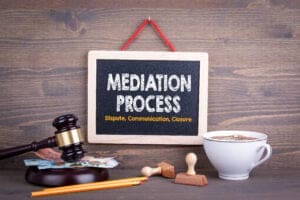What are the benefits of proactive PR for attorneys in highly competitive markets?
In today’s saturated legal marketplace, implementing proactive PR for attorneys has become essential rather than optional for legal professionals seeking to distinguish themselves from competitors. The strategic approach of anticipating and shaping public perception before issues arise allows attorneys to establish authority, build credibility, and attract clients in ways that traditional marketing cannot achieve alone. Unlike reactive public relations that responds to crises after they occur, proactive PR enables attorneys to control their narrative, position themselves as thought leaders, and create meaningful connections with potential clients and media outlets.
The Fundamental Difference Between Proactive PR and Traditional Legal Marketing
Proactive public relations differs significantly from conventional legal marketing strategies in both approach and outcomes. Traditional marketing typically involves direct promotional activities such as advertising, direct mail campaigns, and website optimization with a clear sales intent. These methods push messages outward to potential clients, highlighting credentials, case results, and services offered. While these tactics remain important, they often fail to create the deeper connections and authority that sophisticated legal consumers now demand.
In contrast, proactive PR takes a more subtle, relationship-focused approach that positions attorneys as trusted experts rather than simply service providers. Instead of directly promoting services, proactive PR aims to establish attorneys as thought leaders in their respective practice areas through media relations, content creation, speaking engagements, and community involvement. This approach builds credibility organically, allowing attorneys to demonstrate expertise rather than merely claiming it.
The distinction becomes particularly important in competitive legal markets where potential clients are bombarded with similar marketing messages from multiple firms. When every attorney claims to be “experienced” or “aggressive,” these differentiators lose meaning. Proactive PR cuts through this noise by showcasing substantive expertise and building genuine relationships with target audiences before they need legal services.
Building Trust and Credibility Through Thought Leadership
For attorneys, establishing trust is paramount to practice growth. Legal thought leadership serves as the cornerstone of effective proactive PR, enabling attorneys to demonstrate their expertise while providing genuine value to potential clients. By consistently sharing insights on legal developments, offering analysis of complex issues, and providing practical guidance, attorneys can position themselves as authoritative voices in their practice areas.
Content creation forms the foundation of thought leadership efforts. Attorneys can develop various content types, including blog posts, articles, white papers, videos, and podcasts that address common legal questions or provide insights into emerging trends. This content should be substantive rather than promotional, focusing on educating the audience rather than selling services. For example, an estate planning attorney might create a series of articles explaining recent changes to tax laws and their implications for different types of clients.
The key to effective thought leadership content lies in its specificity and relevance to the attorney’s target audience. Generic legal information provides little value in an age where basic information is readily available online. Instead, attorneys should leverage their specialized knowledge to offer unique perspectives and practical insights that cannot be found elsewhere. This might include analyzing recent court decisions, explaining the practical implications of new legislation, or offering strategic guidance based on years of experience in a particular practice area.
Consistency in content creation also plays a crucial role in building thought leadership. Rather than publishing sporadically, attorneys should develop a regular cadence of content that keeps them visible to their audience and demonstrates ongoing expertise. This consistent presence helps build familiarity and trust over time, positioning the attorney as a reliable source of information and guidance.
Strategic Media Relations: Becoming a Go-To Legal Expert
Developing relationships with journalists and media outlets represents another vital component of proactive PR strategies for attorneys. When reporters need expert commentary on legal issues, they typically turn to sources they already know and trust. By proactively building these relationships before they’re needed, attorneys can position themselves as go-to experts for media opportunities.
The first step in effective media relations involves identifying relevant media outlets that reach the attorney’s target audience. This might include local newspapers, business publications, industry-specific journals, legal news sites, and broadcast media. Attorneys should research these outlets to understand their focus, audience, and the types of stories they typically cover.
Once relevant media outlets are identified, attorneys can begin building relationships with specific journalists who cover legal topics or issues related to their practice areas. This relationship-building process should focus on providing value rather than seeking immediate coverage. Attorneys can introduce themselves to journalists, offer expert insights on relevant topics, and make themselves available as resources for future stories.
When major legal developments occur, attorneys can proactively reach out to media contacts with commentary or analysis. This might include offering perspectives on significant court decisions, new legislation, or emerging legal trends. By providing timely, insightful commentary, attorneys can secure media coverage that positions them as authoritative voices in their field.
Media training becomes essential for attorneys seeking to maximize these opportunities. Being knowledgeable about legal issues isn’t enough; attorneys must also be able to communicate complex concepts clearly and concisely in media-friendly formats. This includes developing the ability to explain legal concepts in plain language, create compelling soundbites, and remain composed during interviews.
Leveraging Digital Platforms for Enhanced Visibility
The digital landscape has transformed how attorneys can implement proactive PR initiatives. Social media platforms, professional networks, and online publications offer unprecedented opportunities for attorneys to share expertise, engage with audiences, and build their professional brand.
LinkedIn has emerged as particularly valuable for attorneys implementing proactive PR strategies. As a professional network with over 900 million users, LinkedIn provides an ideal platform for sharing thought leadership content, engaging with industry discussions, and connecting with potential clients and referral sources. Attorneys can publish articles, share insights on recent developments, and participate in relevant groups to demonstrate their expertise.
Beyond LinkedIn, attorneys should consider which other platforms align with their practice areas and target audiences. For example, a family law attorney might find value in platforms like Facebook where they can share informational content about divorce processes or child custody issues. An intellectual property attorney might leverage Twitter to comment on breaking news related to patent litigation or trademark disputes.
Video content has become increasingly important in digital PR strategies. Attorneys can create educational videos explaining common legal concepts, discussing recent developments, or answering frequently asked questions. These videos can be shared across platforms, embedded in websites, and used in email marketing to provide valuable information in an engaging format.
Webinars and online events offer another effective digital PR tool. By hosting educational webinars on relevant legal topics, attorneys can demonstrate expertise while collecting contact information from interested participants. These events can be recorded and repurposed as on-demand content, extending their value beyond the live presentation.
Community Engagement and Relationship Building
Effective attorney brand building extends beyond digital presence to include meaningful community engagement. By participating in local organizations, sponsoring events, and providing pro bono services, attorneys can demonstrate their commitment to the communities they serve while building valuable relationships.
Speaking engagements at industry conferences, business events, and community gatherings provide opportunities for attorneys to share expertise while connecting with potential clients. These presentations should focus on providing valuable information rather than overtly promoting services. For example, a business attorney might speak at a chamber of commerce event about legal considerations for small businesses, offering practical guidance while establishing credibility with local business owners.
Professional association involvement offers another avenue for relationship building. By actively participating in bar associations, industry groups, and professional organizations, attorneys can connect with colleagues, potential referral sources, and industry leaders. Taking leadership roles in these organizations further enhances visibility and credibility within professional communities.
Strategic philanthropy and pro bono work not only serve the public good but also contribute to positive brand perception. By aligning charitable efforts with their practice areas or personal values, attorneys can make meaningful contributions while building connections with like-minded individuals and organizations. For example, an immigration attorney might volunteer with refugee assistance programs, demonstrating commitment to the community while building relationships with potential referral sources.
Crisis Preparation and Reputation Management
While the focus of proactive PR is building positive perception before problems arise, effective strategies must also include preparation for potential crises. Attorney reputation management requires developing response plans for various scenarios that could impact an attorney’s or firm’s public image.
The first step in crisis preparation involves identifying potential vulnerabilities and risks specific to the attorney’s practice. This might include controversial cases, sensitive client matters, or areas where public misunderstanding could create reputational challenges. By anticipating these risks, attorneys can develop appropriate response strategies before crises occur.
Developing a crisis communication plan ensures that attorneys can respond quickly and effectively if issues arise. This plan should include designated spokespersons, approval processes for public statements, prepared messaging for common scenarios, and protocols for monitoring and responding to media coverage and social media discussions.
Online reputation management has become increasingly important as potential clients routinely research attorneys online before making contact. Attorneys should implement ongoing monitoring of their online presence, including search results, review sites, and social media mentions. This monitoring allows them to identify and address potential issues before they escalate.
Proactive reputation building creates a reservoir of goodwill that can help attorneys weather potential crises. By consistently demonstrating expertise, integrity, and community commitment, attorneys establish positive perceptions that can provide some protection if negative situations arise. This goodwill doesn’t prevent all reputational damage, but it can make audiences more willing to give attorneys the benefit of the doubt during challenging situations.
Measuring PR Success: Beyond Vanity Metrics
Implementing effective proactive PR strategies requires measuring results to determine what’s working and what needs adjustment. Unlike traditional advertising where metrics like impressions and click-through rates provide immediate feedback, PR success often manifests in more subtle ways over longer timeframes.
Media coverage metrics provide one measurement approach. Attorneys can track the quantity and quality of media mentions, including the prominence of coverage, message inclusion, and audience reach. More sophisticated analysis might examine sentiment analysis and message penetration to determine how effectively key messages are being communicated through media coverage.
Website analytics offer insights into PR effectiveness, particularly when examining traffic sources, engagement with thought leadership content, and conversion actions like contact form submissions. Attorneys can track increases in direct traffic and branded searches, which often indicate growing awareness from PR efforts.
Lead attribution becomes particularly important in measuring PR’s business impact. While direct attribution can be challenging, attorneys can implement systems to track how new clients learned about the firm. This might include asking new clients directly, using unique phone numbers or landing pages for different PR initiatives, or implementing customer relationship management systems that track client journeys.
Reputation metrics provide another measurement approach. Attorneys can monitor online reviews, social media sentiment, and brand perception surveys to gauge how PR efforts are influencing public perception. Improvements in these metrics over time can indicate successful PR implementation.
Ethical Considerations in Legal PR
Attorneys implementing proactive PR strategies must navigate unique ethical considerations that don’t apply to other industries. Legal PR strategies must comply with state bar regulations regarding attorney advertising and communication, which vary by jurisdiction but typically prohibit false or misleading statements about an attorney’s services.
Confidentiality obligations create particular challenges for legal PR. Attorneys cannot disclose client information without appropriate consent, even when such information might make compelling PR content. This requires careful consideration of what information can be shared publicly, particularly regarding case outcomes or client testimonials.
Many jurisdictions restrict how attorneys can describe their expertise or specialization. Terms like “specialist” or “expert” may be prohibited unless the attorney has received specific certifications recognized by the state bar. PR materials must be carefully reviewed to ensure compliance with these restrictions.
Some jurisdictions require specific disclaimers on attorney communications, including statements that the material constitutes attorney advertising or that past results don’t guarantee future outcomes. These disclaimers must be incorporated appropriately into PR materials to ensure compliance.
The relationship between attorneys and PR professionals also raises potential privilege concerns. Communications with PR professionals are generally not protected by attorney-client privilege unless the PR professional is directly assisting with legal strategy. Attorneys must be careful about what information they share with PR teams to avoid inadvertently waiving privilege.
Implementing Proactive PR on Limited Budgets
Many attorneys, particularly those in small firms or solo practices, may believe that effective PR requires substantial financial resources. However, legal PR strategies can be implemented successfully even with modest budgets by focusing on high-impact activities and leveraging existing resources.
Content creation represents one of the most cost-effective PR approaches. Attorneys can develop thought leadership content based on their existing expertise without significant financial investment. This might include writing articles for the firm website, creating educational videos using smartphone cameras, or developing presentations that can be repurposed across multiple platforms.
Local media outreach often proves more accessible than national coverage for attorneys with limited PR budgets. Building relationships with local journalists, offering commentary on local legal issues, and participating in community events can generate valuable coverage without the competition associated with national media.
Speaking engagements typically require time rather than financial investment. Attorneys can seek opportunities to speak at industry events, business gatherings, and community organizations. These presentations build credibility while creating content that can be repurposed for other PR initiatives.
Professional associations offer built-in platforms for visibility. By actively participating in bar associations and taking leadership roles in relevant committees, attorneys can enhance their professional profile without significant financial investment.
Strategic partnerships with complementary professionals can extend PR reach. For example, an estate planning attorney might partner with financial advisors or accountants to create joint content or events that reach new audiences while sharing the resource investment.
Adapting PR Strategies for Different Practice Areas
Effective proactive PR for attorneys requires tailoring approaches to specific practice areas, as different legal specialties have distinct audiences, messaging needs, and ethical considerations.
For business law attorneys, PR strategies should focus on demonstrating industry knowledge and practical business acumen. Content might address legal issues affecting business operations, regulatory compliance, or risk management. These attorneys should target business publications, industry-specific media, and events frequented by business owners and executives.
Family law attorneys benefit from PR approaches that emphasize empathy and client support alongside legal expertise. Content might address the emotional aspects of divorce or custody disputes while providing practical guidance. Community involvement and relationship building with therapists, financial advisors, and other professionals who work with families in transition can generate valuable referrals.
Personal injury attorneys face particular PR challenges due to negative stereotypes and strict advertising regulations. PR strategies should focus on education about legal rights, explanations of the civil justice system, and demonstrations of client advocacy. Community safety initiatives and partnerships with healthcare providers can build positive brand associations.
Criminal defense attorneys must navigate public misconceptions about their role in the justice system. PR approaches should emphasize constitutional protections, the presumption of innocence, and the importance of zealous representation. Educational content about criminal procedure and defendants’ rights can help potential clients understand the value these attorneys provide.
Estate planning attorneys benefit from PR strategies that address the emotional and practical aspects of legacy planning. Content might explain how proper planning protects families and preserves assets for future generations. Seminars for specific demographic groups, such as retirees or business owners, can generate direct client connections.
The Future of Legal PR: Emerging Trends
The landscape of legal PR strategies continues to evolve with changing technology, media consumption patterns, and client expectations. Attorneys implementing proactive PR should be aware of emerging trends that will shape future strategies.
Artificial intelligence is transforming legal PR through automated content creation, media monitoring, and analytics. AI tools can help attorneys identify trending legal topics, generate content outlines, and analyze the effectiveness of PR initiatives. While AI cannot replace strategic thinking or relationship building, it can enhance efficiency and provide valuable insights for PR planning.
Video content continues to grow in importance as attention spans shorten and visual learning preferences increase. Short-form video platforms like TikTok and Instagram Reels are increasingly being used by attorneys to explain legal concepts in accessible ways. These platforms reach younger audiences who may not engage with traditional legal content but represent future client potential.
The humanization of legal brands represents another significant trend. Clients increasingly want to know the people behind the legal services they purchase. PR strategies that showcase attorney personalities, values, and community involvement resonate with clients seeking authentic connections. This trend requires attorneys to become more comfortable sharing appropriate personal elements alongside professional expertise.
Niche specialization in PR is becoming more important as legal markets grow increasingly competitive. Rather than attempting to reach broad audiences, attorneys are finding success by focusing PR efforts on highly specific practice areas or client demographics. This specialization allows for more targeted messaging and efficient resource allocation.
Data-driven PR strategies are replacing intuition-based approaches. Attorneys are increasingly using analytics to determine which topics generate engagement, which platforms reach target audiences most effectively, and which messages resonate with potential clients. This data-informed approach allows for continuous optimization of PR efforts.
Integrating PR with Broader Marketing Strategies
While proactive PR offers distinct benefits, its effectiveness multiplies when integrated with broader marketing initiatives. This integration ensures consistent messaging across all client touchpoints while maximizing resource efficiency.
Content developed for PR purposes can be repurposed across multiple marketing channels. For example, a thought leadership article written for media placement can be adapted for the firm website, broken into social media posts, expanded into a whitepaper, or used as the basis for a presentation. This content repurposing maximizes the return on the initial content investment.
PR-generated media coverage should be leveraged in other marketing materials. Attorneys can highlight media mentions on their websites, in email newsletters, and on social media to extend the credibility benefits of this third-party validation. Media logos from publications where the attorney has been featured can be displayed prominently to enhance perceived authority.
Website design should incorporate PR elements, including media mentions, thought leadership content, and community involvement. These elements support the credibility established through PR activities while providing valuable content for search engine optimization.
Client communications can reinforce PR messaging by sharing media coverage, thought leadership content, and community initiatives with existing clients. This approach strengthens client relationships while encouraging referrals based on the attorney’s demonstrated expertise and professional standing.
Business development activities benefit from PR-established credibility. When attorneys approach potential clients or referral sources, the foundation laid through proactive PR makes these conversations more productive. Rather than starting from zero, attorneys can build on the reputation and relationships established through their PR efforts.
Case Studies: Successful Legal PR in Action
Examining real-world examples of successful proactive PR for attorneys provides valuable insights into effective implementation strategies and potential outcomes.
A boutique business litigation firm implemented a comprehensive thought leadership strategy focused on emerging issues in data privacy litigation. The firm’s attorneys published regular articles analyzing recent court decisions, created a quarterly report on litigation trends, and secured speaking engagements at industry conferences. This consistent expertise demonstration led to regular media coverage, including attorney quotes in major business publications. Within eighteen months, the firm reported a 40% increase in qualified leads from companies facing data privacy litigation, with many specifically mentioning the firm’s published content.
A family law attorney in a mid-sized market developed a community-focused PR strategy centered on supporting children during divorce. The attorney created educational resources for parents, teachers, and counselors; partnered with local mental health professionals to offer workshops; and established a scholarship fund for children from divorced families. These initiatives generated positive local media coverage and built relationships with professionals who became referral sources. The attorney reported that these efforts transformed the practice from competing on price to being sought out as the recognized authority on child-centered divorce approaches.
A personal injury firm facing a highly competitive market implemented a PR strategy focused on transportation safety. Rather than traditional advertising emphasizing case results, the firm produced an educational video series on accident prevention, partnered with local schools on bicycle safety programs, and provided expert commentary on transportation infrastructure issues. These initiatives positioned the firm as community advocates rather than simply accident lawyers. The firm reported that new clients increasingly mentioned these community initiatives during initial consultations, indicating the PR approach was successfully differentiating the firm from competitors.
Conclusion: The Competitive Advantage of Proactive PR
In highly competitive legal markets, proactive PR for attorneys provides a sustainable competitive advantage that traditional marketing alone cannot deliver. By strategically building credibility, establishing thought leadership, and creating meaningful relationships before they’re needed, attorneys can differentiate themselves in ways that resonate with sophisticated legal consumers.
The most significant advantage of proactive PR lies in its authenticity. While traditional marketing tells potential clients what an attorney can do, proactive PR shows them through demonstrated expertise, third-party validation, and community engagement. This demonstration creates deeper trust than self-promotion ever could, particularly in a profession where trust forms the foundation of client relationships.
Proactive PR also creates compounding returns over time. Each media mention, speaking engagement, or thought leadership piece builds upon previous efforts, creating an increasingly valuable body of work that enhances the attorney’s professional standing. This cumulative effect contrasts with traditional advertising, which typically stops producing results when the spending stops.
For attorneys willing to invest the necessary time and resources, proactive PR offers a path to practice growth based on substantive expertise rather than marketing claims. In markets where potential clients have numerous options and limited ability to evaluate legal skill directly, this approach provides a meaningful way to demonstrate value and build the relationships that sustain successful practices.
Citations:
- https://attorneys.media/attorneys-pr-digital-presence/
- https://attorneys.media/proactive-pr-legal-marketing-strategies/
- https://www.linkedin.com/pulse/top-public-relations-trends-law-firms-2025-wendy-parker-evslc
- https://www.buildenpartners.com/blog/5-legal-marketing-trends-to-stay-ahead-in-2025/
- https://www.linkedin.com/pulse/applying-attorney-client-privilege-pr-comms-john-o-dwyer-7jtye
- https://natlawreview.com/article/ethical-considerations-lawyer-advertising
- https://www.agilitypr.com/pr-news/branding-reputation/the-legal-checklist-ensuring-compliance-in-your-pr-and-marketing-endeavors/
- https://attorneys.media/proactive-pr-attorney-brand-building/
- https://www.advocatemagazine.com/article/2023-february/ethics-of-law-firm-marketing-and-advertising
- https://horowitzagency.com/biggest-challenges-facing-legal-pr/
- https://growlawfirm.com/blog/lawyer-advertising-rules-you-need-to-know
- https://www.agilitypr.com/pr-news/public-relations/ultimate-guide-to-law-firm-pr-14-ways-pr-benefits-firms-and-8-steps-to-success/
- https://www.furiarubel.com/news-resources/everyday-public-relations-lawyers-primer/
- https://redbanyan.com/4-reasons-why-lega-pr-matters/
- https://www.attorneyatwork.com/how-digital-pr-helps-attorneys-gain-a-competitive-advantage/
- https://www.clio.com/blog/law-firm-public-relations/
- https://natlawreview.com/article/boosting-legal-expertise-simple-yet-effective-public-relations-strategies-law-firms
- https://businessoflawdigest.com/public-relations-lawyers-and-the-benefits-of-an-effective-pr-strategy/
- https://www.runsensible.com/blog/law-firm-public-relations/
- https://www.agilitypr.com/pr-news/public-relations/public-relations-in-the-legal-sphere-vital-strategies-and-key-challenges/
- https://lostboyent.com/law-firm-pr-why-public-relations-for-law-firms-is-vital/
- https://commwiser.com/5-tips-for-lawyers-to-enhance-their-pr-efforts/
- https://www.jaffepr.com/blog/understanding-proactive-pr-vs-reactive-pr
- https://www.ambitiouspr.co.uk/the-importance-of-law-pr/
- https://news.bloomberglaw.com/us-law-week/how-lawyers-can-lead-thoughtfully-through-proactive-pr
- https://everything-pr.com/crafting-effective-pr-campaigns-for-law-firms-strategies-for-success/
- https://lostboyent.com/pr-for-lawyers-why-its-important-and-how-lost-boy-entertainment-can-help-you-stand-out/
- https://zenmedia.com/blog/law-firm-public-relations/
- https://natlawreview.com/article/10-marketing-strategies-maximize-q4-and-drive-success-2025
- https://www.litera.com/blog/marketing-ideas-for-law-firms
- https://www.martindale-avvo.com/blog/2025-predictions-for-legal-marketing/
- https://www.clio.com/blog/law-firm-marketing-strategy/
- https://prlab.co/blog/pr-trends-2025/
- https://www.attorneyatwork.com/6-key-legal-trends-2025-prepare-your-firm-for-the-future/
- https://www.jaffepr.com/blog/top-5-2025-social-media-trends-law-firms
- https://cardinalconcepts.com/legal-marketing-strategies-your-law-firm-should-focus-on-in-2025/
- https://www.everlaw.com/blog/year-in-review/top-predictions-and-trends-for-legal-tech-in-2025/
- https://www.litera.com/blog/legal-trends
- https://law.rutgers.edu/LegalIssuestoWatch2025
- https://www.jdsupra.com/legalnews/trends-shaping-the-legal-marketing-2319337/
- https://www.interlegal.net/key-strategies-to-enhance-law-firms-public-relations/
- https://www.clio.com/blog/lawyer-advertising-rules/
- https://www.jaffepr.com/blog/legal-pr-and-media-relations-2025-essential-data-and-strategies
- https://tenthings.blog/2023/06/30/ten-things-marketing-law-basics-for-in-house-counsel/
- https://www.trizcom.com/blog/law-firm-pr
- https://conroycreativecounsel.com/the-ethical-line-navigating-legal-marketing-restrictions-across-the-us/
- https://legal.thomsonreuters.com/blog/marketing-law-overview-for-in-house-counsel/
- https://www.linkedin.com/pulse/2025-legal-marketing-trends-how-law-firms-can-stay-ahead-bill-rice-pxgye
- https://pro.bloomberglaw.com/insights/business-of-law/legal-trends/
- https://good2bsocial.com/2025-advertising-trends-law-firms-need-to-know/
- https://www.gartner.com/en/legal-compliance/trends/top-legal-trends
- https://www.paperstreet.com/blog/what-is-shaping-the-future-of-content-marketing-for-law-firms-trends-to-watch-in-2025/
- https://www.spotdraft.com/blog/top-10-legal-trends-in-2025-a-deeper-look-into-the-legal-industry













